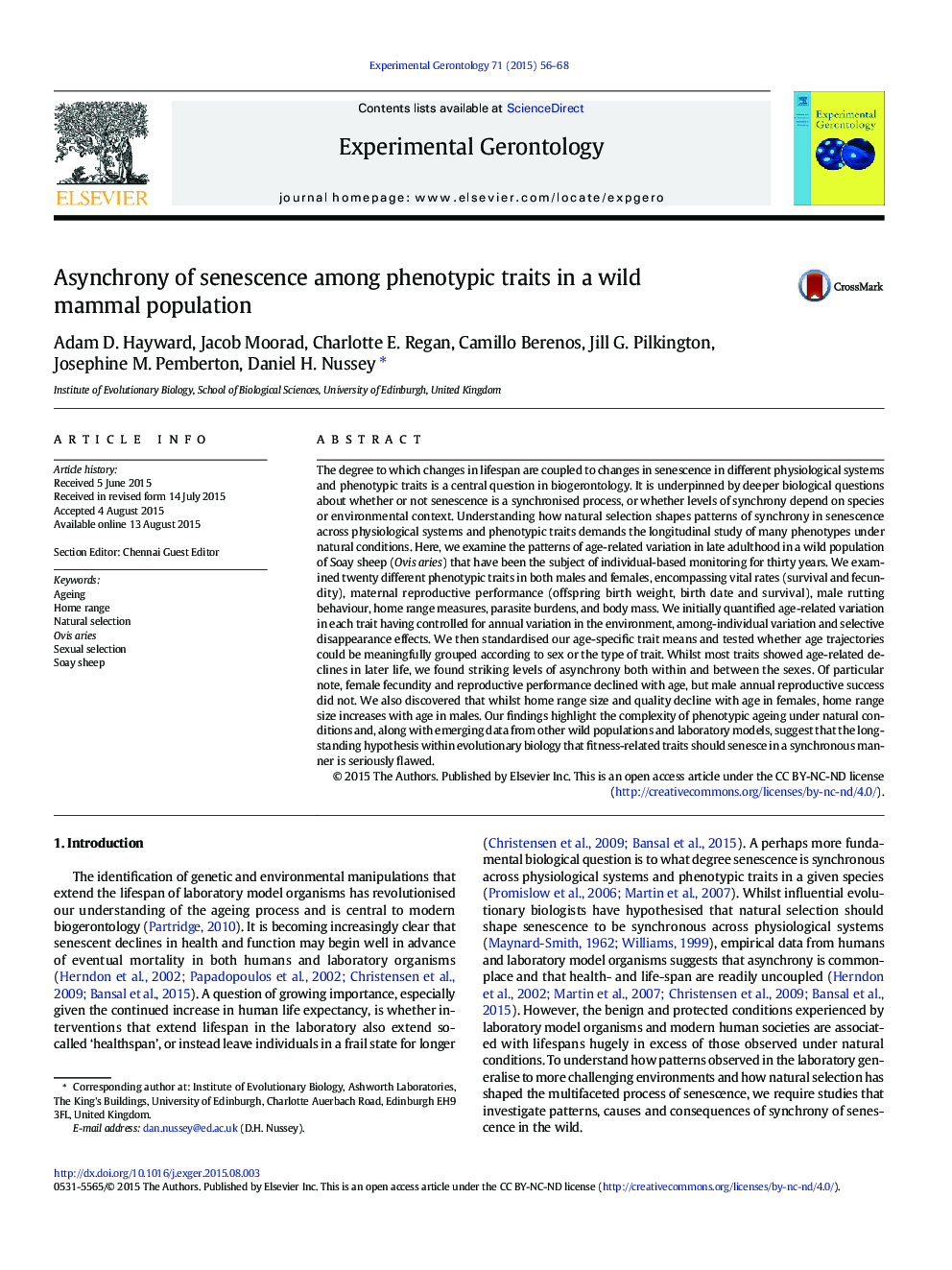| کد مقاله | کد نشریه | سال انتشار | مقاله انگلیسی | نسخه تمام متن |
|---|---|---|---|---|
| 8263169 | 1534870 | 2015 | 13 صفحه PDF | دانلود رایگان |
عنوان انگلیسی مقاله ISI
Asynchrony of senescence among phenotypic traits in a wild mammal population
ترجمه فارسی عنوان
همبستگی پیری میان صفات فنوتیپی در جمعیت پستانداران وحشی
دانلود مقاله + سفارش ترجمه
دانلود مقاله ISI انگلیسی
رایگان برای ایرانیان
کلمات کلیدی
موضوعات مرتبط
علوم زیستی و بیوفناوری
بیوشیمی، ژنتیک و زیست شناسی مولکولی
سالمندی
چکیده انگلیسی
The degree to which changes in lifespan are coupled to changes in senescence in different physiological systems and phenotypic traits is a central question in biogerontology. It is underpinned by deeper biological questions about whether or not senescence is a synchronised process, or whether levels of synchrony depend on species or environmental context. Understanding how natural selection shapes patterns of synchrony in senescence across physiological systems and phenotypic traits demands the longitudinal study of many phenotypes under natural conditions. Here, we examine the patterns of age-related variation in late adulthood in a wild population of Soay sheep (Ovis aries) that have been the subject of individual-based monitoring for thirty years. We examined twenty different phenotypic traits in both males and females, encompassing vital rates (survival and fecundity), maternal reproductive performance (offspring birth weight, birth date and survival), male rutting behaviour, home range measures, parasite burdens, and body mass. We initially quantified age-related variation in each trait having controlled for annual variation in the environment, among-individual variation and selective disappearance effects. We then standardised our age-specific trait means and tested whether age trajectories could be meaningfully grouped according to sex or the type of trait. Whilst most traits showed age-related declines in later life, we found striking levels of asynchrony both within and between the sexes. Of particular note, female fecundity and reproductive performance declined with age, but male annual reproductive success did not. We also discovered that whilst home range size and quality decline with age in females, home range size increases with age in males. Our findings highlight the complexity of phenotypic ageing under natural conditions and, along with emerging data from other wild populations and laboratory models, suggest that the long-standing hypothesis within evolutionary biology that fitness-related traits should senesce in a synchronous manner is seriously flawed.
ناشر
Database: Elsevier - ScienceDirect (ساینس دایرکت)
Journal: Experimental Gerontology - Volume 71, November 2015, Pages 56-68
Journal: Experimental Gerontology - Volume 71, November 2015, Pages 56-68
نویسندگان
Adam D. Hayward, Jacob Moorad, Charlotte E. Regan, Camillo Berenos, Jill G. Pilkington, Josephine M. Pemberton, Daniel H. Nussey,
